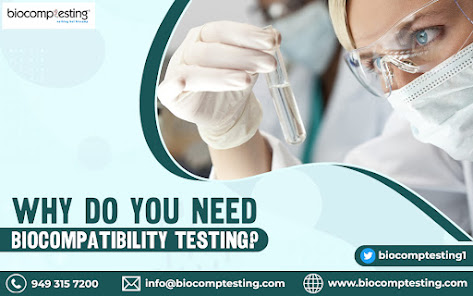Why Do You Need Biocompatibility Testing?
Medical devices are manufactured and used to perform various tasks like tests and surgeries to save lives. It is a necessity to ensure that materials used in such devices and equipment are safe for your health and do not cause any side effects or do not contaminate your body with toxic materials.
The biocompatibility testing ISO 10993 is established to ensure that only safe materials are used in surgeries and tests. The standard test will determine the fitness of equipment or device for use on humans. It also verifies whether any materials used in such devices cause harm to your health.
Ø Why do you need ISO 10993 standards for medical devices?
It ensures the material or device performs the tasks as a host in a specific application. It also ensures that materials or devices used do not cause any physiological effects on humans. The standard ISO 10993 protects humans from risks that may arise when using these medical devices.
The manufacturer of medical devices should have an understanding of
● Materials used in the manufacture of medical devices
● Other processes
● Sterilization
The producer of medical devices needs to give importance to chemical characterization prior to deciding to use them in in vivo or in vitro biocompatibility testing.
Ø Steps involved in biocompatibility testing
The biocompatibility testing process involves proper planning, testing, and evaluation of the measured data. In the first step, the data on the materials used for the device production is collected. It also includes determining the type of test to be conducted. Cytotoxicity test is performed in in-vitro screening.
Chemical characterization or extractable leachable testing is performed prior to in vitro testing. The ISO 10993 tests for biocompatibility include cytotoxicity (Agarose Overlay Test, MEM Elution Test, Direct Contact Test), Intracutaneous/ Irritation Reactivity, Hemolysis Testing, Sensitization, Systemic Toxicity, Acute Systemic Toxicity Test, Pyrogen Tests, Implantation Testing, and USP Plastic Tests.
Ø Required for regulatory approval
Medical devices and materials need to undergo biocompatibility testing for regulatory approval. It is possible to witness unintended complications from the materials used in the production of medical devices when in contact with humans. Even well-characterized materials could result in unexpected reactions if they are processed wrongly.
The biocompatibility testing FDA 510K is conducted on medical devices like fixation tapes, monitors, compression bandages, external prostheses, and electrodes that come in contact with human tissues, skin, blood, etc. Premarket data is to be submitted to the US FDA before seeking to market.
Ø Leaders in safety testing
Manufacturers need to perform testing of medical devices and materials used to perform tests to confirm diseases. It should be done without the use of animals to check toxicity etc. The evaluation method adopts a unique approach to accurately predict results.
The service line of biocompatibility tests includes methods to test the products for eye irritation, skin irritation, acute systemic toxicity, and skin sensitization. Independent regulatory agencies and scientists are involved in this process to ensure only high-quality and safe materials are used in the manufacture of medical devices and materials.
Ø Safe for humans
Biocompatibility testing by manufacturers before actual marketing helps humans to use the devices without any fear of side effects. It also prevents contamination of hazardous chemicals with your skin, tissues, and other body parts during medical care.


Comments
Post a Comment